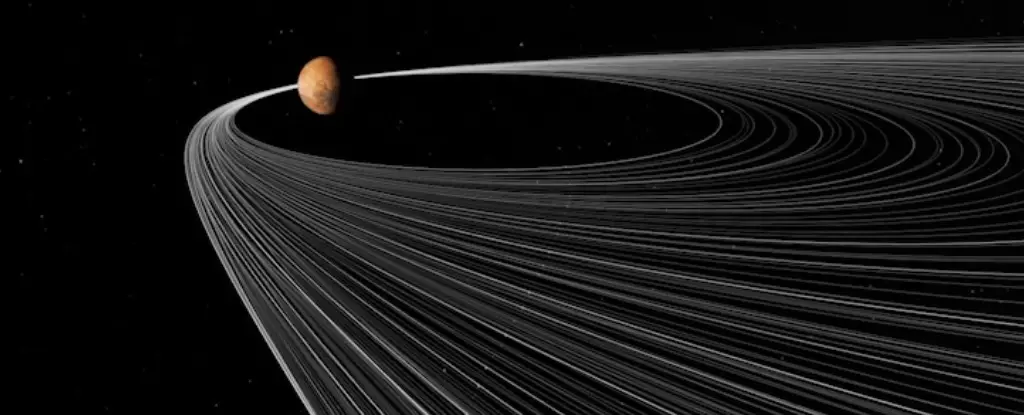In the vast expanse of our Solar System, Earth and Mars stand out as the only two rocky planets that possess moons. While Earth’s Moon is a well-studied celestial entity, its Martian counterparts, Deimos and Phobos, remain shrouded in mystery. The prevailing hypothesis regarding our Moon suggests it emerged from debris resulting from a cataclysmic collision with a protoplanet named Theia in the early days of the Solar System. However, the origins of Mars’ moons are less definitively understood due to the absence of direct rock samples to study. This lack of empirical evidence leaves room for speculation and various theories.
One prevalent theory posits that Deimos and Phobos are captured asteroids, remnants of the asteroid belt lurking in the vicinity of Mars. Observations of the moons reveal that they share characteristics with small asteroids, which lends some credence to this idea. However, this model faces significant challenges. Mars, being a smaller planet than Earth or Venus, exerts a weaker gravitational pull, raising questions about its ability to capture not one, but two moons. Additionally, asteroids captured by a planet would typically exhibit more elliptical orbits, while Deimos and Phobos maintain noticeably circular trajectories. This inconsistency urges scientists to reconsider the plausibility of the capture hypothesis.
Another model suggests that Deimos and Phobos could have formed as a result of a collision involving Mars itself. According to this theory, an asteroid or comet, carrying a fraction of Mars’ mass, could have struck the planet, ejecting debris that eventually coalesced into its two moons. This scenario could account for the moons’ circular orbits, as material flung into space from the planet’s surface would tend to settle into more stable, circular paths over time. Nevertheless, this concept has its own set of complications. Typically, such debris from a collision would remain in close proximity to the planet, whereas Deimos orbits at a greater distance than Phobos. This discrepancy raises eyebrows and casts doubt on the feasibility of this model.
Recent advances in computer simulations have unveiled a new and intriguing model that attempts to reconcile the above theories through a unique perspective. Instead of a straightforward impact or gravitational capture, researchers propose a near miss by a substantial asteroid. The idea is that, should a large asteroid pass closely by Mars, the tidal forces exerted by the planet could tear the asteroid apart, resulting in a stream of fragments. Over time, these remnants might enter elliptical orbits around Mars, eventually shifting due to gravitational influences from the Sun and other celestial bodies.
This approach serves as a robust explanation for the circular orbits of Deimos and Phobos, while accounting for their distinct distances from Mars. Moreover, the notion of a debris stream generated from a near miss appears to harmonize the conflicting elements present in previous models.
Despite this innovative model providing a more coherent understanding of the origins of Martian moons, definitive conclusions still hinge upon empirical research. The true key to resolving the enigma surrounding Deimos and Phobos lies in direct exploration and analysis of these celestial bodies. Anticipation is building for the Mars Moons eXploration mission (MMX), set to launch in 2026. This ambitious mission aims to delve into the mysteries of both moons while collecting samples from Phobos.
As we stand on the brink of this new scientific endeavor, it is hoped that the upcoming findings from MMX will shed light on the formation processes of these enigmatic Martian companions. Understanding the origins of Deimos and Phobos could not only illuminate Mars’ own history but may also enrich our comprehension of planetary formation and evolution throughout our Solar System. The quest to unravel the mysteries surrounding these moons is not merely an academic pursuit; it will ultimately help us better understand our place in the cosmos.


Leave a Reply